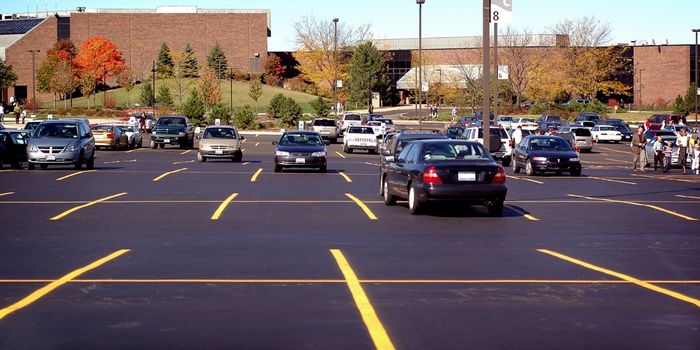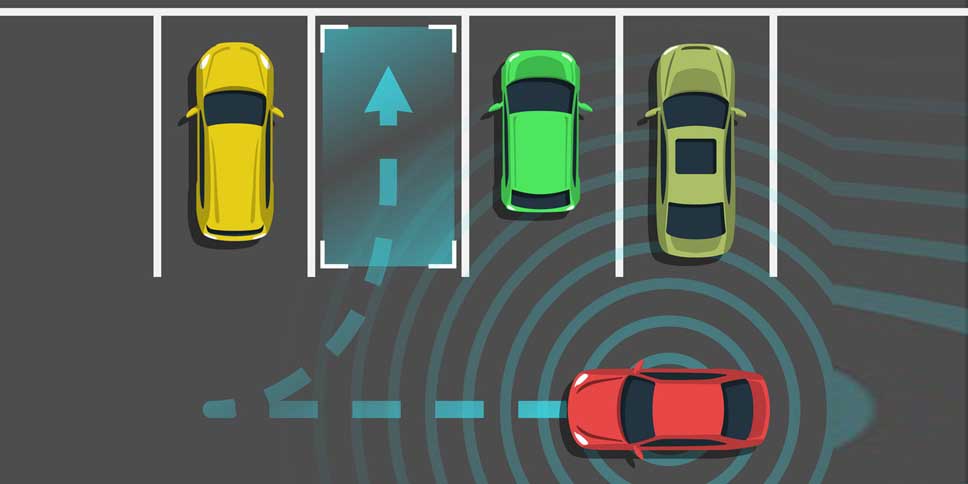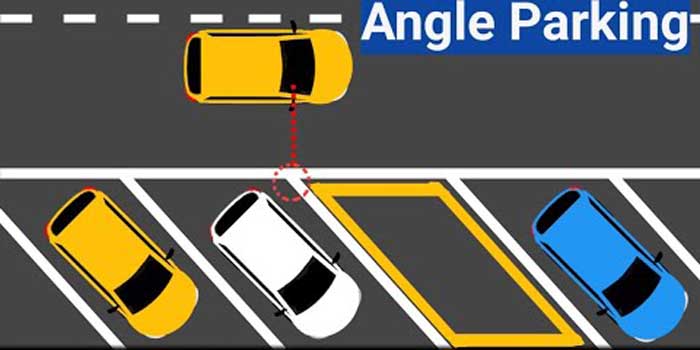Parking a car might not be a big deal for experienced drivers. But for new drivers or those still learning, it can be a hard challenge. Especially when parking in tight spaces, on uphill or downhill, under traffic pressure and also where there’s a last spot available in the street.
That’s why we’ve created this simple guide. In this blog, we’ll walk you through how to park a car step-by-step, how to handle parking on a slope, different parking styles and how to avoid parking violations. By the end, we’ve also shared few top parking tips.
So, without further a do, let’s get started!
How to Park a Car Step-by-Step Instructions?
Step 1: Find a Suitable Parking Spots
The first step is to find a safe, legal, and appropriate parking place. Legal, is because some parking spaces are reserved for residents, authorized personnel, or company staff. While others are specifically marked for people with disabilities.
So simple solution is that always look for posted parking signs or markings and read the instructions. If the lot or space clearly allows public or guest parking and there are no restrictions, only then park your car.
Совет от профессионала: If you’re in a rush or feeling unsure, always go for open and enough parking space for your ease.

Step 2: Estimate the Parking Space Dimensions
Once you’ve found a spot, now estimate the parking space dimensions and ask yourself that can your car fit here without scratching or hitting other cars?
When analyzing the dimensions, keep these in mind:
- If possible, look for enough parking space in which your car can fit properly.
- Make sure the parking spot you choose must have parking space dimensions of min 4 feet of space on each side. So that you can easily open your door. Also, others can easily access their cars too.
- If parallel parking, make sure that the space should ideally be about 1.5x the length of your car.
- If perpendicular or angled parking, make sure there’s enough space in front or behind. So that you can safely enter or exit.
Кончик: Take nearby cars as a reference to correctly estimate the dimensions.
Step 3: Active Turn Signal and Check Mirrors
After you’ve found a parking space, and you’re ready to park, now turn on your indicator in the direction of your located parking space. This lets drivers behind you know you’re about to slow down or stop.
You’ll also need to check for others nearby so that you do not hit anyone while parking. For that, look into your mirrors and blind spots and look for cyclists, pedestrians, or any incoming traffic. If there are any, let them pass first. And once the path is clear, then make your move.
Кончик: Don’t rush. Stay calm and double-check surroundings even if someone’s waiting behind you.

Step 4: Parallel Parking (Example)
Although there are several ways or styles to park your car, in this section, we’ll take the example of parallel parking. Because most new drivers often struggle with parallel parking. So now you have turn signal and checked through mirrors, here are the parallel parking steps:
- Drive and place your vehicle exact parallel to the car which is parked in front of the empty space.
- Make sure there’s a 2–3 feet of distance between your car and the parked one beside you.
- Now put the car in reverse gear. And slowly go back while turning your steering wheel fully. Your car should start moving into the space at an angle.
- When your car is at around a 45-degree angle to the curb. And also you can see the car behind your parking spot in your vehicle’s left mirror, you’re good to go.
- Now keep reversing straight in the direction of the curb.
- Once your front bumper clears the rear bumper of the car in front, after that, turn the wheel fully to the left. Afterward, slowly reverse to go in.
- Then, adjust your vehicle position by reversing or driving forward. You must ensure that your car is properly and parallel parked between two cars.
Step 5: Engage a Parking Brake
Now that you’ve finally parked your car, it’s time to engage your parking brake. Doing so is very important. Because when engage brake, your car stays firm and does not roll, especially on hills or uneven roads.
Step 6: Turn the Engine Off and Remove the Car Key
The last step is to shift your car into parking mode. If your car is automatic, shift it to P mode. If it’s manual, shift to neutral. Also, turn off the ignition and take out the key. Before exiting, we suggest you double-check to ensure that the car is parked correctly.
Plus, make sure vehicle’s windows are closed and lock the doors. Also, when you exit, be careful that you do not other cars with your car door.
Parking on a Hill: Uphill Downhill Parking
Most beginner drivers also struggle to park on a hill. Whether it’s uphill (road going upward) or downhill (road going downward), once you know how to position your vehicle’s wheels you can park very easily. So now let’s learn how to park on uphill and downhill:
When Parking on Uphill with Curb
- When you stop on an uphill road, turn your vehicle’s front wheels away from the curb.
- Next, put your car in neutral.
- Then, slightly take off your foot from the brake so that the front tire hit the curb and stop it.
- Lastly, shift the gear into park (P) or first gear (1) for manual cars. Also, engage the parking brakes
When Parking on Downhill with Curb
- When you stop on a downhill road, turn your front wheels toward the curb direction.
- Then, slowly take off your foot from the brake to let your vehicle’s front wheel to touch the curb.
- Now shift your vehicle into park (P) if you’re driving an automatic; shift to reverse (R) if manual.
- Also, don’t forget to engage the parking brake.
When Parking on Uphill or Downhill without Curb
If you are parking on an uphill or a downhill road, but there’s no curb or the curb height is short, in either case, follow this simple rule:
- Regardless of the hill position, always turn the vehicle’s front wheel into the right position and then engage brake!
That way, even in case your vehicle roll up, it’ll not go in the traffic direction means road direction. Instead, it’ll go in the off-road direction. The direction where wheel are pointing.
How to Find A Perfect Parking Area?
Well, finding a good parking spot can make and break your day. That’s why, in the below section we’ve summarized everything that you should know to find a perfect parking spot for your car. Let’s get in:
- Arrive a Bit Early
If you’re heading to a mall, office, or appointment, always choose early times. Make sure you reach the place 10–15 minutes early. Because at earliest hours, the vehicular and foot traffic is fewer. And that’s why early arrival may give you more time to find open spots.
- Avoid Parking Between Congested Cars
Sometimes parking in starting lines or between two tightly parked vehicles can pose a big hassle for you. That’s why, we highly suggest you park farther away from the entrance or choose spaces with one side open. This way, you’ll also get to do a healthy walk.
- Use Parking Apps
If you live in crowded cities then finding a suitable parking space during rush hours or near event venues can be extremely exhausting. One good solution is to use any parking map apps. You can use install and use Google Maps as this will help you locate nearby parking spots in real-time.
- Choose Well-Lit Areas
If it’s getting dark, or you’ll be exiting late, it’s always ideal to find a spot under a streetlight and park your vehicle there. Because that way, not just your vehicle stays safe, also you reduce the chances of theft or scratches.
Different Parking Techniques: Parallel, Perpendicular, Angle & Other Parking
There are different techniques or let’s say parking style that you can use to park your car depending on a parking lot situations. Let’s discuss most common parking techniques:
-
Parallel Parking
Parallel parking is the technique in which you park your car exact parallel to the road curb and in between two cars (one in front and one behind). This is a common parking style used in narrow streets, busy city roads, and urban areas.

-
Perpendicular Parking
Whereas, in perpendicular parking, you park your car at a exact 90-degree angle to the curb or wall. This is the most common type of parking you’ll generally see in malls, grocery stores, schools, parking garages, and office parking lots.

-
Angle Parking
In angle parking, you generally park your car at an angle to the driving lane (usually 45 to 60 degrees). You’ll see this parking technique often used in small lots, diagonal streets, and public parking zones.

-
Other Parking
Apart from the above, there are also few other parking techniques. Most common includes head-in parking and Reverse (back-in) parking. Head-in parking means you drive straight into the parking space with the front of your car and park in the same way.
Reverse parking, on the other hand, is the opposite of head-in. Means, you reverse into the parking spot, so when you leave, you can drive forward.
Top 5 Reverse Parking Tips for Beginners
- Align Before You Turn
Always position your car with the car parked in second position. So that your car is s straight and your side mirror aligns with the parking line before turning your steering wheel.
- Start Slow and Stay Calm
When shift into reverse, go slow by seeing in mirrors. Because rushing increases your chances of oversteering or hitting other vehicles.
- Use Your Side Mirrors
While reversing, use your side mirrors all the time. They help you track your position and distance from the lines or nearby cars.
- Practice With Markers
Set up cones or use chalk lines in an open space to practice reverse parking regularly. This significantly helps you build steering control and confidence.
How To Avoid Parking Violations?
You can avoid the parking violations, parking fines, and parking ticket just by simply reading signage carefully and parking your vehicle within marked space. It’s that simple. Here are few more tips:
- Read Posted Signages Carefully
In most public and private parking areas in the U.S. parking enforcement is taken very seriously. And also parking signage are thoroughly placed to guide drivers at every step. And all you need to do is notice and follow them.
Before you park, take few seconds to read the signage. Check if parking is allowed, what hours/days it’s restricted. Or if there’s a time limit, or whether parking fee apply.
- Follow Basic Legal Parking Rules
You must always park at least 15-feet away from fire hydrants. 20 feet from intersections, and 30 feet from stop signs (as per most state laws).
Also, never park nearest to any bus stops, loading zones, and emergency lanes. You should also do not park in disabled parking spaces unless you have a valid permit.
- Park Your Vehicle Correctly
As we said that you can avoid fines based on how you park the car. So, make sure your car is fully within the white or yellow lines. Do not touch or cross the line into another spot. Also, never do double-park (parking next to an already parked car and blocking a lane) as it’s prohibited.
JACKWIN’s Top Parking Tips
-
Do a Lot of Parking Practice
No parking tricks can make you an expert in vehicle parking, but consistent practice can. That’s why do not rush in learning and do a lot of practice. You can also use blind spots mirrors as they’ll help you in parking practice.
-
Take Time and Don’t Rush
As a new driver, it’s possible that you may feel pressured or rush in parking. Especially in crowded lots or when other vehicles are waiting behind you. But don’t let that stress you out. Take your time, relax, think carefully, estimate your car dimensions with the available parking space and only then enter.
-
Researching Parking Spaces Ahead
If you’re navigating to a new destination, you should always research about the parking spaces in certain area beforehand. That way, if one has gotten full, you can move to next ones.
-
Avoid Parking Under Trees
Though shade is tempting, but if you park your vehicle under the tree, sap, bird droppings, falling debris can damage your car’s body. Even if the tree falls on your car, it can cause serious damage to car glass or entire body which certainly will cost you several dollars.
Bonus: Use a Wheel Chock for Extra Parking Safety
If you’re someone who regularly parks on sloped roads, uneven road, or just feel worried that your vehicle may roll on to the road, JACKWIN Wheel Chock is a smart investment.
It’s actually a small wedge-shaped block that you place behind your vehicle tires to prevent any unwanted rolling. Our wheel chocks are light-weight, durable, weather, water-resistant, can hold up to 40 ton vehicle weight, and are affordable. Связаться с нами сегодня, чтобы получить мгновенный запрос!
NOTE: If you’re not sure, read our how to use wheel cock with your vehicle blog!
Заключение
If you ask how to park a car? It’s not that challenging in open spaces. But it’s challenging when you do not know how to park on a hill or between two already parked cars. We at ДЖЕКВИН understand the common struggles of new drivers.
That’s why we have explained step-by-step process to parking a car. By following these exact instructions and with consistent practice, you’ll be able to park effectively.


-80x69.png)

